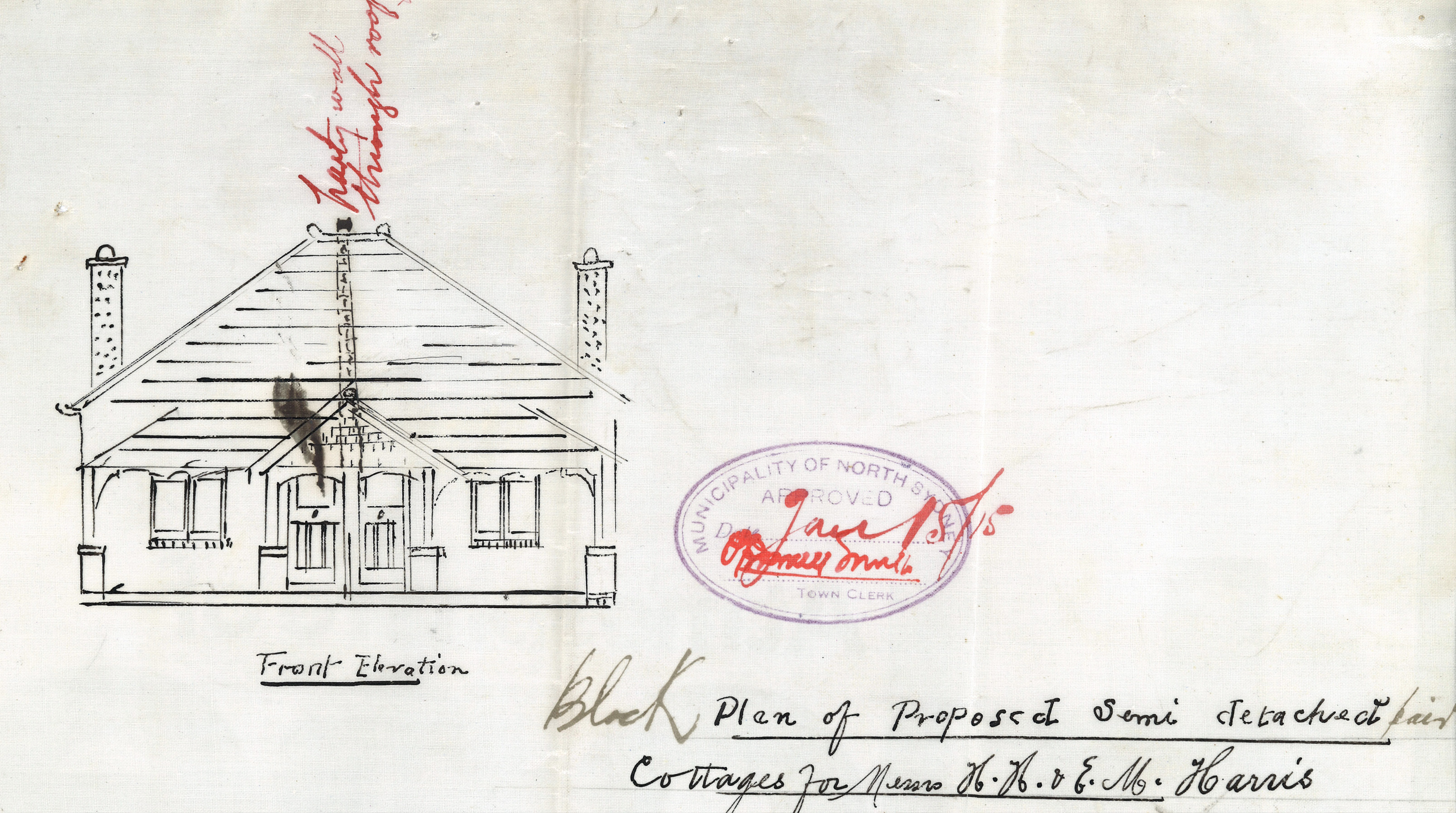|
Semi-detached housesA semi-detached house is one half of a pair of dwellings which share a common wall.Semi-detached houses are strictly only found in pairs as anything comprised of more than two conjoined houses should be called a terrace. The term is usually applied to single storey dwellings but can accurately refer to double storey paired houses. 'Semis', as they are commonly called, were particularly popular in the years leading up to and following Federation in 1901. They, therefore, typically display the design elements of English Revival/Federation era architecture. Most semi-detached homes in North Sydney date from this period. The type can be understood as a design compromise between the terrace and the detached bungalow, which was the preferred form of suburban house for idealistic planners and architects around the turn of the 20th century. The advantages of the former certainly attracted speculative builders who typically erected North Sydney's semi-detached houses. As with terrace housing, expense was reduced by sharing a common wall while the mirror image layout simplified construction. Squeezing two houses on to one lot, as was often done, increased the profit margin. Most semi-detached houses, then, catered for the lower end of the market and were affordable for skilled working class or lower middle class families. However, before the rise of home ownership after World War Two, most residents would have rented the house from the speculator builder or a subsequent landlord/lady for whom the property was a source of income and an investment. However, the semi-detached house also afforded the possibility of a side garden and greater interior natural light through side windows than was possible with any but the end dwellings of a row of terrace houses. As issues of city planning came to the fore around the time of the Federation of Australia's colonies in 1901, both of these elements, garden and light, had assumed great importance. For by this stage Australians were already predominantly an urban, or at least suburban, people. At this formative moment in the nation’s history there was much commentary and soul searching about the need to raise a healthy and moral population in such an urban setting. Light and fresh air was thought to be important safeguard against disease. Gardens had the practical role of supplementing income by providing home-grown vegetables or raising chickens. Tending a garden was also regarded as a respectable pastime that, it was hoped by planners and politicians, would occupy the man of the house and keep him from ‘straying’ to the hotel. And in what was a rather Romantic belief, it was hoped that flower gardens would uplift the character of residents by providing access to the beauty of nature.
|
|




